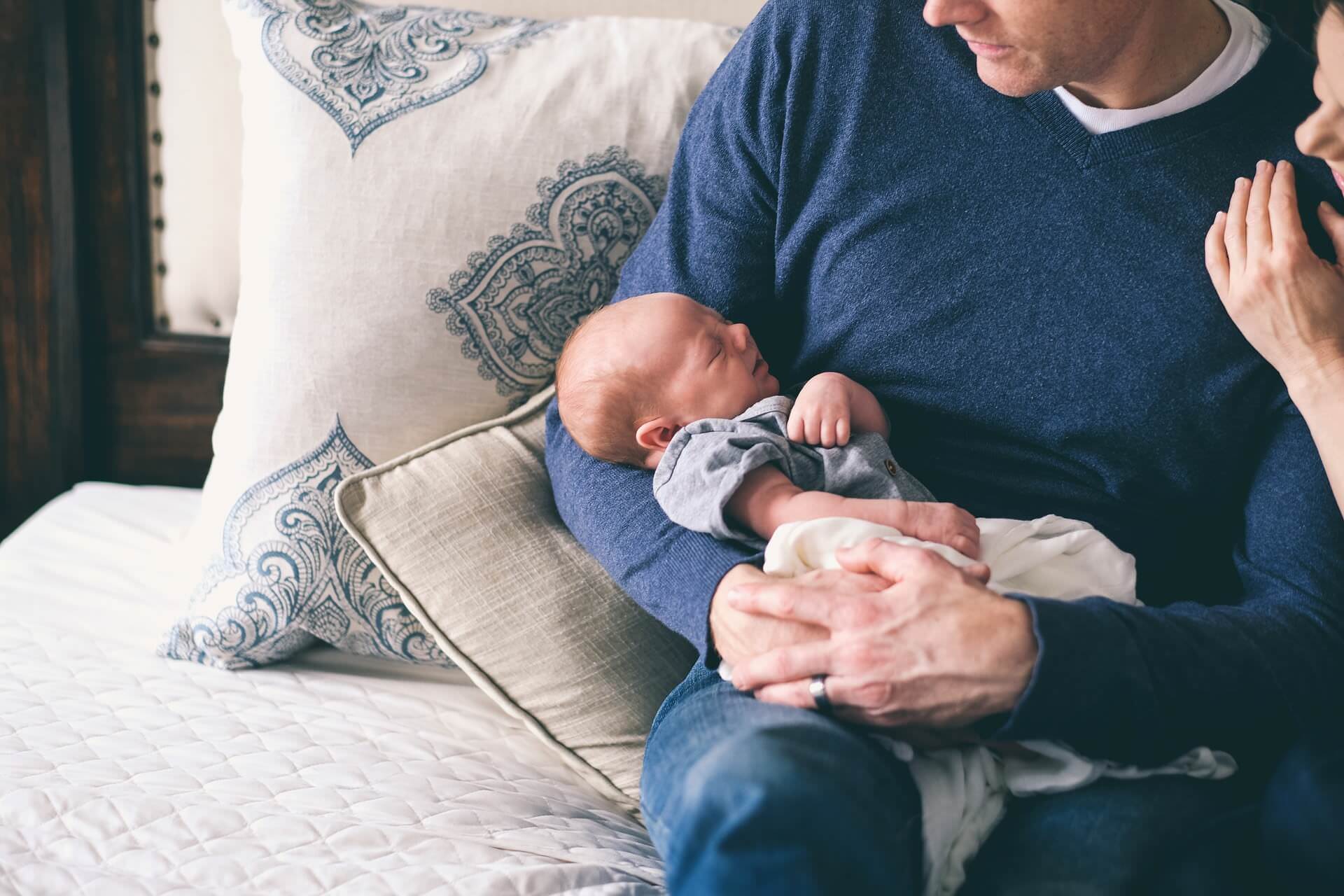Shared parental leave (SPL) is a useful tool to help reduce your organisation’s gender pay gap, as well as bolster the overall well-being of your staff. But what is it, and how should you promote and utilise it?
What is shared parental leave?
Shared parental leave allows eligible employees to choose how to share their time off work following the birth or adoption of a child.
Shared parental leave in the UK allows parents to share up to 50 weeks of leave and up to 37 weeks of pay. The leave (and pay) is flexible, meaning parents can take an equal amount of time off, or divide it up into 3 separate blocks of leave each.
You can choose to be even more flexible than this if you wish, but that’s at your discretion.

Who is entitled to shared parental leave?
Shared parental leave gives eligible parents greater flexibility.
To take shared parental leave, employees must qualify under certain criteria. Firstly, there must be two parents sharing responsibility of a child. Applicable partners include:
- The biological father/mother.
- The spouse or civil partner of the birth parents (The same applies for adoptive parents).
- A partner living in an ‘enduring relationship’ with the birth parent.
Another relative cannot be a partner. Eligible parents who take shared parental leave must share responsibility for the child from the day of birth or adoption. They must also be legally classed as an employee and pass two tests:
- The Continuity of Employment Test.
- The Employment and Earnings Test.
Continuity of Employment Test
To be classed as eligible parents for SPL, the employee must have been employed with you for a certain period. This period is at least 26 weeks by the end of the ‘qualifying week’.
The qualifying week is the 15th week before the week the baby is due to be born. ‘Continuous employment’ means working for the same employer without a break.
It’s important to note that absence due to sickness or incapacity won’t break the continuity of employment. That is, unless the period of incapacity causes the employee to be absent from work for 27 weeks. In this case, continuity is broken.
Also, SPL does not carry over if eligible parents move to a different employer.
Employment and Earnings Test
Eligible parents must have, during the 66 weeks before the baby is due:
- Been working for at least 26 weeks (these don’t need to be consecutive).
- Earned a minimum of £30 a week on average in 13 of the 66 weeks.
One parent must be eligible for maternity/adoption leave and make a notice to curtail this. This person must meet the employment test. The other person must meet the employment and earnings test.
Shared parental leave for adoption
For the purposes of adoption leave, one parent must decide to be the main adopter. This is the person who can take adoption leave. The employee doesn’t need to have any length of service, as this is now day one right.
After the first two weeks of adoption leave, the couple can share the rest of the leave entitlement. To do this they would need to give notice in advance and meet the required tests.
Being classed as a partner in this situation is the same as for a birth child, as highlighted above. In short, they must be:
- Married to the main adopter.
- The civil partner of the main adopter.
- Live with the main adopter and the child in an ‘enduring family relationship’.
For more information on adoption leave and pay, see our blog here

Shared parental leave and a surrogacy arrangement
If your employee is having a child via a surrogate, they also have the right to adoption leave. This means they don’t need the length of service to qualify. This right applies if they have a parental order with their partner or intend to apply for one. If they are intending to apply or have applied, they must expect it to be granted.
To qualify for shared parental leave, they must meet the eligibility criteria outlined above.
If your employee is a surrogate, they have the right to maternity leave. However, if they are a surrogate for another couple, they cannot take shared parental leave. What a surrogate does after the child is born doesn’t affect their right to maternity leave.
How does shared parental leave work?
Shared parental leave is flexible and puts most of the choices in the hands of the employees. Eligible staff members share up to 50 weeks of leave, but there are some rules.
How much leave time can they share?
The first two weeks of maternity and adoption leave are compulsory. The rest of the 50 weeks can be split however the couple chooses. The couple is also entitled to up to 37 weeks of shared parental pay (ShPP).
Parents can choose to take the leave separately or together. For example, they could both take 25 weeks of leave each and return to the office following this period. Or, one partner could take five weeks off while the other stays at work, then when the five-week period is over, the other parent takes the remaining 45 weeks when the partner returns to work.
They can also split the time, or stagger leave and pay.
The only stipulation is that the leave must be taken within the first year after the birth of the child.
How is shared parental leave created?
Shared parental leave actually begins when maternity leave ends. The first two weeks of maternity leave are compulsory. The mother can choose to end her maternity leave there and begin shared parental leave. However, she can choose to end her maternity leave later, for example, six weeks, and move to shared parental leave.
Taking more maternity leave does not create more shared parental leave. If maternity leave ends at two weeks, then the couple is entitled to 50 weeks of SPL. If it ends at six weeks, then the couple is entitled to 46 weeks.
What is the work and pay criteria?
If both parents work for the same employer, and they reach 26 weeks of employment by the end of the 15th week before the due date then they are eligible for Shared Parental Pay.
They must also:
- Remain with you while they take SPL.
- Be ‘employees’ and not ‘workers’.
- Earn on average a minimum of £123 a week.
Finally, to be truly eligible they must provide you with notice at least eight weeks prior to the leave date.

How do you work out shared parental pay?
It’s actually quite simple. Statutory Shared Parental Pay is £156.66 or 90% of the employee’s average weekly earnings, (whichever is lower).
If the mother decides to stop their maternity pay or allowance before their full entitlement is up, they may claim SSPP for the remaining weeks. The maximum payment period is 37 weeks.
Enhanced shared parental pay
A great way to encourage the usage of shared parental leave is to offer enhanced shared parental pay (EShPP). The minimum you must pay is the same as statutory maternity pay, which is 90% of the employee’s average weekly earnings for the first 6 weeks and then the statutory rate following that.
If you’re unsure how much to pay your employees, you could offer full pay instead of 90%.
Whatever you decide, you should make sure the amount you’ll pay is written in the employee contracts or handbook.
Shared parental leave calculator
If you’re still uncertain how much you need to pay your employees for SMP, paternity pay, adoption pay, or SSPP, then you can use the Government Maternity, Adoption & Paternity Calculator.
Prior to using this, you should have the following information at hand:
- Baby’s due date.
- Date of Birth (paternity).
- Employee's salary details.
- Dates of adoption, (match date and date of placement).
End of shared parental leave
Like maternity or paternity leave, there is a definitive end. The maximum entitlement a couple receives is 50 weeks. At this point, both employees should return to work.
However, like maternity allowance, the maximum payment period is 37 weeks, and so many staff will want to end their shared parental leave at that point.
Once the employee has submitted a period of leave notice, they can vary or cancel their shared parental leave dates. They do this by providing you with a variation notice with at least eight weeks' written notice.
This is sometimes known as a curtailment notice.
Both parents must provide this notice when they wish to end their period of shared parental leave.

Drafting a shared parental leave policy
Maternity allowance is a separate payment given by the government if an employee isn’t eligible for SMP, whereas shared parental leave is time off. Having maternity policies in place does not mean you have, by extension, an SPL policy.
For example, you may offer enhanced maternity pay, but does this also apply to parents taking SPL? You may have a stance on staff taking maternity allowance early; could a parent taking SPL do the same?
Another element to consider is the fact that there have been cases where employees taking shared parental leave face discrimination.
Your policy should ensure that anyone taking SPL does not have to deal with discrimination, harassment, or bullying, and if they do, they have the correct procedures in place to protect them. You can always use your policies on maternity leave and statutory maternity pay as a basis to begin constructing your shared parental leave policy.
Some vital elements to include in your SPL policy are:
- A breakdown of what shared parental leave is.
- Entitlement to leave.
- Employee notice.
- Shared parental pay entitlement.
- Terms and conditions.
- Keeping in touch during leave.
- Return to work.
- Special circumstances.
For that extra bit of support…
Parental leave of any kind is a sensitive topic. Avoiding heightened emotions during this period is crucial to having a constructive conversation.
Unfortunately, it can be difficult to avoid having uncomfortable conversations. Fortunately, that’s where Croner comes in!
If you’re facing a tricky leave-related situation, you might think you’re alone in facing it, but Croner has faced every conceivable scenario before.
Our advisors have a directory of shared parental leave example scenarios to hand that cover all issues, to ensure you are in good hands. Get in touch with Croner on 0808 501 6651.
Related resources
Categories
- Business Advice
- Culture & Performance
- Disciplinary & Grievances
- Dismissals & Conduct
- Employee Conduct
- Employment Contracts and Documentation
- Employment Law
- Employment Rights Bill
- End of Contract
- Equality & Discrimination
- Health & Safety
- Hiring and Managing
- Leave & Absence
- Managing Health & Safety
- Moving
- Occupational Health
- Pay & Benefits
- Recruitment
- Risk & Welfare

![[Top Tips] Improving Hygiene in the Workplace featured image](/media/2345/top-tips-hygiene-header.png)


